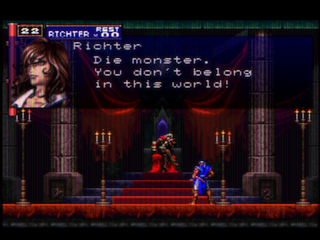
Crt Royale At 4k
Hello, I found these wonderful settings for crt-royale that really give it an. Or higher (2160p / 4k / Retina or more), then it gets really interesting! Apr 27, 2014 Duke4.net Forums: CRT screen imitation in DOSBox - Duke4.net Forums. But I think this is not CRT-ROyale but another shader (?). Is 4k enough? Maybe some advanced shader could have an option to enter your physical monitor size and adjust its display accordingly or something.
Project Kahu was a major upgrade for the A-4K Skyhawk attack aircraft operated by the Royal New Zealand Air Force (RNZAF) in the mid-1980s. (The project was named after the Māori-language name for the New Zealand swamp harrier.)
History[edit]
In 1986, the RNZAF initiated this project to improve the capabilities of its A-4K fleet. The upgrade included the installation of a WestinghouseAN/APG-66radar optimized for maritime tracking, HOTAS controls and a 'glass' cockpit (2 large CRT screens), MIL-STD 1553B databus, Litton Industries LN-93 inertial navigation system, Ferranti 4510 wide-angle HUD, the Vinten airborne video recording system, the General Instrument ALR-66 radar warning receiver, and a Tracor ALR-39 chaff/flare dispenser.
Parts of the wings were reskinned and some structural elements rebuilt, and the aircraft wiring replaced. Giren no yabou axis no kyoui isoniazid. Because of advances in miniaturization, it was possible to incorporate these additional electronics items entirely within the fuselage without requiring the use of the dorsal hump. The Kahu-modified Skyhawk could be recognized by a blade-like ILS aerial antenna on the leading edge of the vertical stabilizer. The aircraft also received armament upgrades including the capability to fire AIM-9L Sidewinders, AGM-65 Mavericks and GBU-16 Paveway IIlaser-guided bombs.
The cost of the project was NZ$140 million and gave the RNZAF Skyhawks the electronic “eyes and ears” of a modern fighter aircraft such as the F-16 Fighting Falcon or F/A-18 Hornet.
Aftermath[edit]
The RNZAF withdrew the Skyhawks from service in 2001 and they were put into storage awaiting sale.
Draken International signed an agreement with the New Zealand government in 2012 to purchase eight McDonnell Douglas A-4K Skyhawks as well as various other equipment and accessories. The remaining aircraft were given to museums in New Zealand and Australia.
See also[edit]
- A-4AR Fightinghawk
- A-4SU Super Skyhawk
References[edit]
External links[edit]
- redkiwi.weebly.com - Kahu, the A-4K Skyhawk Story.
Presentation
RetroArch is shipped with a lot of shaders. There is an overwhelming array of them and we can't show all of them on this page.
Here are a few common examples:

Shaders can also be used to display the handheld border:
Shader languages and shader presets
Shaders are small programs, and they are written in specific programming languages. RetroArch supports 3 of these languages:
- CG: Old, deprecated format. Might not be available if RetroArch is built without Cg runtime support.
- GLSL: Shader format available to OpenGL. Wide range of platforms including phones and tablets.
- Slang: New and recommended shader format, when available. Compatible with Vulkan, Direct3D 10/11/12, OpenGL Core, WiiU and Metal renderers.
Depending on your platform and the way you have configured RetroArch, you need to use one of these shader types.
RetroArch is also able to stack these shaders to create a combined effect. These complex effects are saved with a special extension:
- .cpg for CG
- .glslp for GLSL
- .slangp for Slang
The shader presets can also have parameters. This means that you can tweak them to fit your needs.
Downloading and upgrading shaders
You can download or upgrade the shader packs for the 3 types in Main Menu->Online Updater.
Loading a shader preset
To enable a shader preset, you need to have a game running.
You then trigger the menu and you should see a Shaders entry in the Quick Menu.
Go to Load Shader Preset and choose a preset file.
For this example, we used shaders_glsl/crt/crt-geom.glslp.
Configuring a shader
In this example, we have set the Menu Shader pipeline to OFF and the Background Opacity to 0 in the Settings->User Interface->Menu to be able to preview the parameter changes in live.
Load a game and apply a shader preset that supports parameters like shaders_glsl/crt/crt-geom.glslp.
You then trigger the menu and you should see a Shaders entry in the Quick Menu.
Go to Preview Shader Parameters and start playing with the values.
When you are happy with your changes, you can save them under a new preset file.